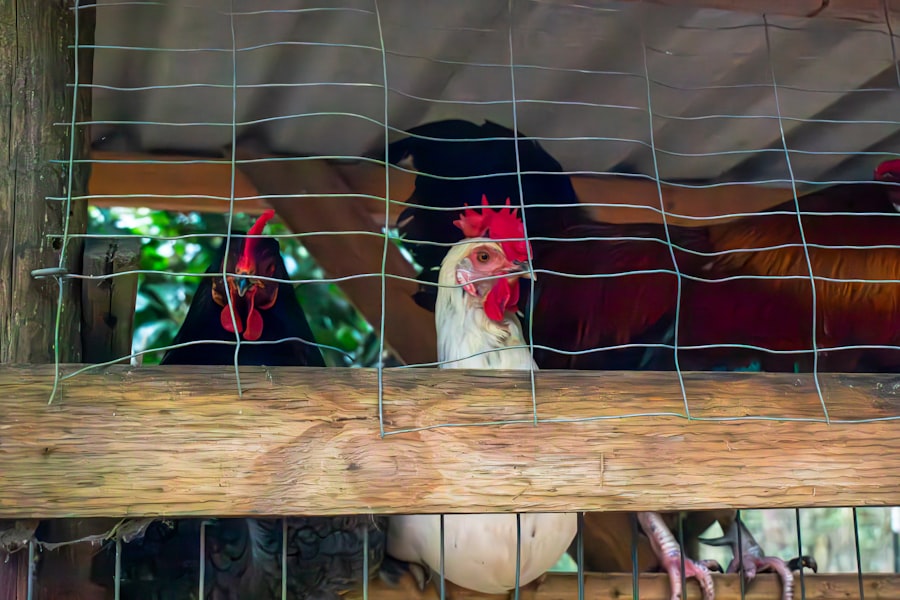When addressing neighbor disputes, it is essential to first identify the underlying cause of the conflict. These disputes can stem from various sources, including disagreements over property boundaries, complaints about noise levels, issues with pet behavior, or differences in lifestyle choices. Taking the time to thoroughly understand the specific nature of the dispute is crucial for developing an effective resolution strategy.
By gaining a clear understanding of the issue, individuals can approach the situation with empathy and a genuine desire to find a mutually beneficial solution. Additionally, comprehending the issue involves recognizing one’s own potential role in the dispute. It is important to engage in self-reflection and evaluate personal actions and behaviors to determine if they may have contributed to the conflict.
Acknowledging one’s own responsibility in the situation fosters a sense of humility and openness, which can lead to more productive discussions with neighbors. This self-awareness can help create an environment conducive to finding a resolution that addresses the concerns of all parties involved.
Table of Contents
- 1 Establishing Boundaries
- 2 Creating Physical Barriers
- 3 Using Deterrents
- 4 Communicating with Your Neighbor
- 5 Seeking Legal Recourse
- 6 Finding a Compromise
- 7 FAQs
- 7.1 What are some effective ways to keep my neighbor’s chickens out of my yard?
- 7.2 Is it legal for my neighbor’s chickens to roam into my yard?
- 7.3 What should I do if my neighbor’s chickens are causing damage to my property?
- 7.4 Are there any natural deterrents that can keep chickens out of my yard?
- 7.5 What are some potential risks of having chickens in my yard?
Key Takeaways
- Understanding the Issue: Take the time to understand the root of the problem and the perspective of your neighbor.
- Establishing Boundaries: Clearly define your property lines and make sure your neighbor is aware of them.
- Creating Physical Barriers: Consider installing fences or hedges to create a physical separation between your properties.
- Using Deterrents: Utilize noise machines or motion-activated lights to discourage unwanted behavior.
- Communicating with Your Neighbor: Openly communicate with your neighbor to address the issue and find a resolution together.
- Seeking Legal Recourse: If necessary, seek legal advice and explore your options for resolving the issue through legal means.
- Finding a Compromise: Be open to finding a compromise that works for both parties and maintains a peaceful relationship.
Establishing Boundaries
Defining Boundaries to Prevent Conflicts
One of the first steps in addressing a neighbor dispute is to establish clear boundaries. This can involve setting boundaries for noise levels, property lines, or even interactions with pets. By clearly defining these boundaries, you can help prevent future conflicts from arising.
Communicating Boundaries Respectfully
It’s important to communicate these boundaries to your neighbor in a respectful and non-confrontational manner. This can help ensure that both parties are on the same page and can work towards a resolution that respects each other’s needs and preferences.
Mutual Respect and Understanding
In addition to setting boundaries, it’s also important to respect your neighbor’s boundaries. This means being mindful of noise levels, property lines, and other factors that may impact your neighbor’s quality of life. By respecting your neighbor’s boundaries, you can help foster a sense of mutual respect and understanding that can be crucial in resolving the dispute.
Creating Physical Barriers

In some cases, creating physical barriers can be an effective way to address a neighbor dispute. This can involve installing fences or hedges to clearly define property lines and provide privacy for both parties. By creating physical barriers, you can help prevent future conflicts from arising by clearly delineating each party’s space.
When considering physical barriers, it’s important to approach the situation with a level of sensitivity and respect for your neighbor’s needs. It’s crucial to communicate with your neighbor about any plans to install physical barriers and to ensure that they are comfortable with the proposed changes. By approaching the situation in a collaborative manner, you can help prevent further conflict and work towards a solution that respects both parties’ needs.
Using Deterrents
In some cases, using deterrents can be an effective way to address specific issues in a neighbor dispute. For example, if you are dealing with a neighbor whose pet frequently enters your yard, using deterrents such as motion-activated sprinklers or ultrasonic devices can help discourage the behavior. Similarly, if noise is a source of conflict, using soundproofing materials or white noise machines can help mitigate the impact of the noise on both parties.
When using deterrents, it’s important to approach the situation with a level of empathy and understanding for your neighbor’s perspective. It’s crucial to communicate with your neighbor about any plans to use deterrents and to ensure that they are comfortable with the proposed measures. By approaching the situation in a collaborative manner, you can help prevent further conflict and work towards a solution that respects both parties’ needs.
Communicating with Your Neighbor
Effective communication is key in resolving neighbor disputes. It’s important to approach the situation with an open mind and a willingness to listen to your neighbor’s perspective. By engaging in open and honest communication, you can work towards finding a resolution that addresses both parties’ needs and concerns.
When communicating with your neighbor, it’s important to approach the conversation with empathy and respect. This means actively listening to your neighbor’s concerns and being open to finding a compromise that works for both parties. It’s also important to communicate your own needs and concerns in a clear and respectful manner.
By fostering open communication, you can help prevent further conflict and work towards finding a resolution that respects both parties’ perspectives.
Seeking Legal Recourse

Understanding When Legal Recourse is Necessary
Legal recourse may be necessary in cases where there are clear violations of property rights or local ordinances that need to be addressed. In such situations, seeking legal action can provide a clear and binding resolution to the dispute.
Approaching Legal Recourse with Professionalism
When seeking legal recourse, it’s essential to approach the situation with a level of professionalism and respect for the legal process. This means being prepared to present evidence and documentation to support your case and being open to finding a resolution through legal channels.
Communicating with Your Neighbor
It’s also important to communicate with your neighbor about any plans to seek legal recourse and to ensure that they are aware of the potential implications. This can help to avoid misunderstandings and promote a more constructive approach to resolving the dispute.
Finding a Compromise
Ultimately, finding a compromise is often the most effective way to resolve a neighbor dispute. This may involve finding creative solutions that address both parties’ needs and concerns. For example, if noise is a source of conflict, finding a compromise on quiet hours or soundproofing measures can help mitigate the impact of the noise on both parties.
When seeking a compromise, it’s important to approach the situation with an open mind and a willingness to find common ground. This means being open to exploring different options and being willing to make concessions in order to find a resolution that works for both parties. By finding a compromise, you can help prevent further conflict and work towards finding a solution that respects both parties’ perspectives.
In conclusion, addressing a neighbor dispute requires patience, empathy, and effective communication. By understanding the issue, establishing boundaries, creating physical barriers, using deterrents, communicating with your neighbor, seeking legal recourse when necessary, and finding a compromise, you can work towards finding a resolution that respects both parties’ needs and concerns.
If you’re looking for ways to keep your neighbor’s chickens out of your yard, you may also be interested in learning more about how to build a secure and comfortable chicken coop for your own backyard. Check out this article on chicken coop interior ideas for tips on creating a safe and inviting space for your feathered friends. A well-designed coop can help prevent your chickens from wandering into your neighbor’s yard and causing any potential conflicts.
FAQs
What are some effective ways to keep my neighbor’s chickens out of my yard?
Some effective ways to keep your neighbor’s chickens out of your yard include installing a fence, using chicken wire or netting, and using natural deterrents such as citrus peels or predator decoys.
Is it legal for my neighbor’s chickens to roam into my yard?
Laws regarding chickens roaming into neighboring yards vary by location. It’s important to check with your local municipality or homeowners association to understand the regulations in your area.
What should I do if my neighbor’s chickens are causing damage to my property?
If your neighbor’s chickens are causing damage to your property, it’s best to have a polite conversation with your neighbor to address the issue. If the problem persists, you may need to involve local authorities or seek legal advice.
Are there any natural deterrents that can keep chickens out of my yard?
Yes, there are natural deterrents that can help keep chickens out of your yard. Some examples include using citrus peels, cayenne pepper, or planting certain plants that chickens dislike, such as marigolds or lavender.
What are some potential risks of having chickens in my yard?
Having chickens in your yard can pose risks such as property damage, spread of disease, and attracting predators. It’s important to address any concerns with your neighbor and take necessary precautions to protect your property.
Meet Walter, the feathered-friend fanatic of Florida! Nestled in the sunshine state, Walter struts through life with his feathered companions, clucking his way to happiness. With a coop that’s fancier than a five-star hotel, he’s the Don Juan of the chicken world. When he’s not teaching his hens to do the cha-cha, you’ll find him in a heated debate with his prized rooster, Sir Clucks-a-Lot. Walter’s poultry passion is no yolk; he’s the sunny-side-up guy you never knew you needed in your flock of friends!







